When pyuria “battle” can be considered practically lost. It means that white blood cells melted from their remains formed pus. It also includes necrotic masses of tissues the vascular wall. This analysis indicates the need for immediate remedial measures.
Pyuria is one of the laboratory signs of severe inflammation in the urinary ways. The development process is characterized by the accumulation of leukocytes in the lesion.
These cells are “trying” to fight against infectious agents, reduce the coverage area, to form a restrictive shaft. Therefore, in the urine of a diseased person always detect increased numbers of leukocytes (pyuria).
How to evaluate the number of leukocytes in the urine?
In connection with the protective function in the urinary tract is always a small amount of leukocytes. They were counted by the laboratory and evaluated for number in one field of view of the microscope.
In children, the number of cells must be equal to zero or allowed a single (1-2) in girls.
In adults, normal fluctuations are more significant:
- for men 0-3;
- for women 0-5.
If microscopic examination of sediment revealed up to 20 cells, you must first verify the correctness of the collection analysis. Often in connection with the negligence or absence of necessary information in the urine is drained not clean the dishes, do not consider it necessary to wash.
To judge the state of the urinary organs in the presence of secretions from the genital tract is not possible. Men who undergo prostate massage, you cannot combine it with the urine. The analysis is considered unreliable. The child without the necessary sanitary treatment in the urine fall intestinal bacteria and white blood cells. This is especially typical for kids with diarrhea.
Another significant mistake is to delay delivery for analysis. To obtain accurate results, the study should be conducted not later than two hours after urination. Later starts the fermentation process from contact with air oxygen.
The increase of leukocyturia in children under 20 in the field of view are often found in parasitic infection. Here connects the mechanism of allergic reaction to a foreign agent.
To Refine the analysis according to Nechyporenko. When pyuria the number of cells greatly exceeds 2000 cells. If the patient is confident in the correctness, the number of white blood cells and related impurities (of bacteriuria, protein, cylinders, mucus, red blood cells) to judge the severity of inflammation.
For the diagnosis of pyuria the number of leukocytes in the field of vision must be 60 or more, urine visually determine increased turbidity, flakes or strands. In the analysis according to the method Kakhovskogo-Addisa (per day) leukocyturia more than 3 million. This means that on some level the urine is purulent-inflammatory process.
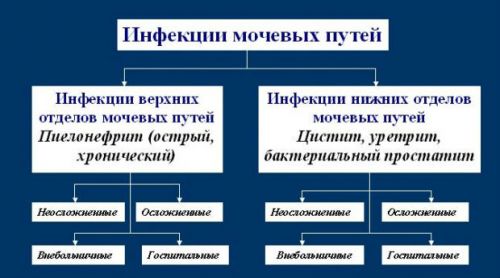
The physician needs to identify the lesion. Likely diseases are:
- urethritis;
- cystitis;
- pyelonephritis;
- glomerulonephritis;
- urolithiasis with stagnation and inflammation in the overlying organs.
The symptom is regarded as a serious complication after kidney transplantation.
Hospital infections always are typically more severe, with marked pyuria
Reasons
Unlike leukocyturia with pyuria may not be the physiological state, explaining the presence of pus. We know that a small increase in leukocytes possible in women during pregnancy (hormonal effects), the treatment of certain medications.
Pyuria is always a sign of disease. Perhaps the stage of the disease is still secretly (latent) and the patient does not feel any symptoms. But the action of infectious pathogens are already evident.
On the prevalence and frequency of lesions the main cause of inflammation in the urinary organs are:
- Escherichia coli (more commonly women);
- Klebsiella;
- enterococci;
- streptococci.
When nosocomial infection in the first place out:
- Pseudomonas aeruginosa (often in men);
- Proteus;
- fungi of the genus Candida.
In rare cases, the infection is called:
- Mycoplasma;
- chlamydia;
- staphylococci;
- Haemophilus influenzae;
- the corinebacteria isolation.
The magnitude of bacteriuria is more accurately assessed only on completed tank. the analysis of urine. After decoding the data about the crops on nutrient medium counts the number of colony forming units (CFU). The infectious process is confirmed by the presence of 100,000 or more in SOME ml of urine.
How to identify the level of the lesion?
Criteria of active inflammation of urologists consider the presence of:
- active white blood cells;
- cells shterngeymera-Malbina.
A number of authors suggest to follow only the instructions on the pyuria. They believe this characteristic is more reliable.

Identifying the level of the lesion is carried out by analogy with hematuria on two or trehstakannoy sample
In the first vessel from the bladder to be collected a portion of 50 ml with continuous urination. Second – the entire remaining volume at or dvuhtonnoy the sample is divided into 2 parts with trehstakannoy study. In each sample, determine the number of leukocytes.
Upon detection of pyuria it divided:
- on the initial – defined only in the first vessel, indicates inflammation in the lowest part of the excretory tract (the urethral channel);
- terminal – detect pyuria in the third (end) portions, it tells about the defeat in the pelvis or in men the prostate gland;
- total – pus find in all the glasses, which indicates an inflammatory process in the kidneys or bladder.
The results of the samples are suitable as a preliminary option studies for definitive diagnosis, the doctor uses a comprehensive examination of the patient.
What are the indicators of urine indicate the cause of the pyuria?
The technician sees under the microscope not just leukocytes, but cell type.
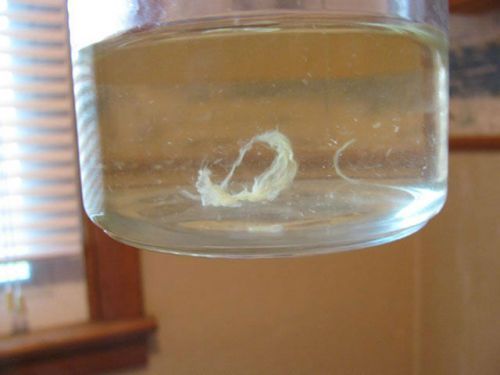
The predominance of one of them may indirectly indicate the cause of inflammation:
- neutrophils – signs of pyelonephritis, tuberculosis;
- monocytes – often indicate glomerulonephritis or interstitial nephritis;
- lymphocytes are linked to altered immune responses in systemic diseases (lupus erythematosus);
- eosinophils – prove the increased role of rapid allergic reactions.
Pus visible to the eye in the form of fibers, flakes, granular inclusions
In what diseases is observed pyuria?
It should be remembered that pyuria is not a separate disease. It serves as a confirmation of infection in the urinary ways at different nosological forms. This can be a primary pathology or a complication of other diseases.
The most frequently detected with inflammation:
- in the bladder and urethra (severe cystitis, urethritis);
- the renal pelvis (pyelitis, purulent pyelonephritis, chronic pyelonephritis);
- the diverticula of the bladder wall;
- renal parenchyma (interstitial nephritis);
- the kidneys in tuberculosis, hypoplasia, hydronephrosis;
- cystic tissue in the polycystic kidney;
- renal glomeruli and tubules (glomerulonephritis).
As complications inflammation with pyuria is detected:
- in systemic lupus erythematosus;
- intoxication in case of poisoning;
- amyloidosis of the kidneys;
- chronic renal failure;
- diabetic glomerulosclerosis;
- allergic different etiology;
- acute appendicitis;
- bacterial sepsis of newborn;
- urolithiasis.
- kidney transplant;
- prostatitis and phimosis in men.
Symptoms
Clinical manifestations of pyuria depends on the underlying disease.

Often accompanies:
- painful urination;
- shortness of urges;
- the release of small amounts of urine;
- the lack of a sense of complete evacuation;
- the increase in temperature;
- pain in lower back with one hand;
- headache;
- increased weakness and fatigue.
Lower back pain is one of the leading symptoms of pathology
People do not immediately notice changes in the urine.
The obvious symptom of the disease become symptoms such as:
- increased turbidity;
- flakes in the sediment;
- an unpleasant odor;
- difficulty urinating;
- constant suprapubic pain:
- nausea and vomiting;
- the sense of thirst.
About the movement of stone in urinary ways say paroxysmal pain in the lower back radiating to groin, hematuria after an attack.
For pyelonephritis indicates:
- severe dysuria;
- fever;
- dull pain in the lower back.
About cystitis should be thinking:
- when the pain over the pubis;
- the sharp pains when urinating;
- uchennyh urge;
- a small temperature increase.
Chronic pyelonephritis is manifested by periodic deterioration, dull pain in the lower back. For all these manifestations of pyuria in the analysis is the negative sign indicates a worsening of a new infection.
Treatment
Treatment pyuria requires not only anti-inflammatory therapy, and applications:
- high doses of drugs;
- use forms for intravenous administration;
- binding determination of the sensitivity of flora to antibiotics;
- if replacement is necessary, making the reinforcing combinations of medicines;
- a longer treatment period than during leukocyturia.
The main task – the elimination of the causes of inflammation, a complete reorganization of the source of infection.
For the removal of pus from the urinary assigned abundant drinking regime.
Shown herbal teas and fruit drinks:
- cowberry (leaves and berries);
- cranberry;
- chamomile;
- bearberry;
- sage;
- birch buds.
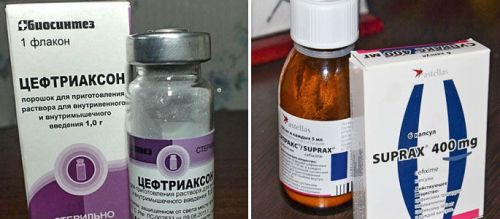
From the diet exclude all irritating food:
- spicy seasonings;
- grilled and smoked meats;
- fat broths;
- confectionery.
Depending on the condition of the patient the doctor will prescribe cephalosporins in capsules or intravenously
The main anti-inflammatory drugs are antibiotics:
- penicillin group;
- cephalosporin;
- fluoroquinolones;
- carbapenem.
The expressed inflammatory symptoms of the urethra and bladder are used instillation with local lavage of the cavity with a solution of antiseptic action, the introduction of antibiotics. In chronic diseases with dim manifestations, in addition to antibiotics, recommended physiotherapy, means to support and activate the immune system.
Apply symptomatic agents:
- antispasmodic drugs injections or rectal candles;
- anti-allergic;
- antipyretic.
The patient with the detected pyuria is recommended to seriously pursue restoration of protective forces. Will help of herbal immunomodulators (Echinacea tincture, ginseng, Chinese Magnolia vine), receiving transferfactor. One should follow the prevention of hypothermia, physical activity, and food preferences. Urine tests are required to monitor the state of the urinary and hidden pyuria.

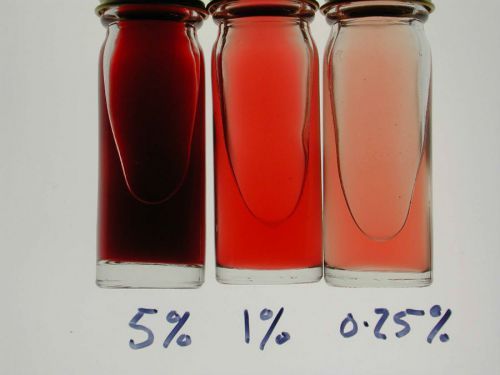

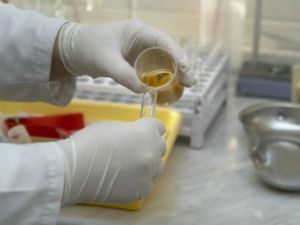
You forgot something..
Thanks for your practical advice on what is normally a forgotten topic. Is it okay to link this with my people?
Heya i抦 for the first time here. I found this board and I find It truly useful & it helped me out a lot. I hope to give something back and help others like you helped me.